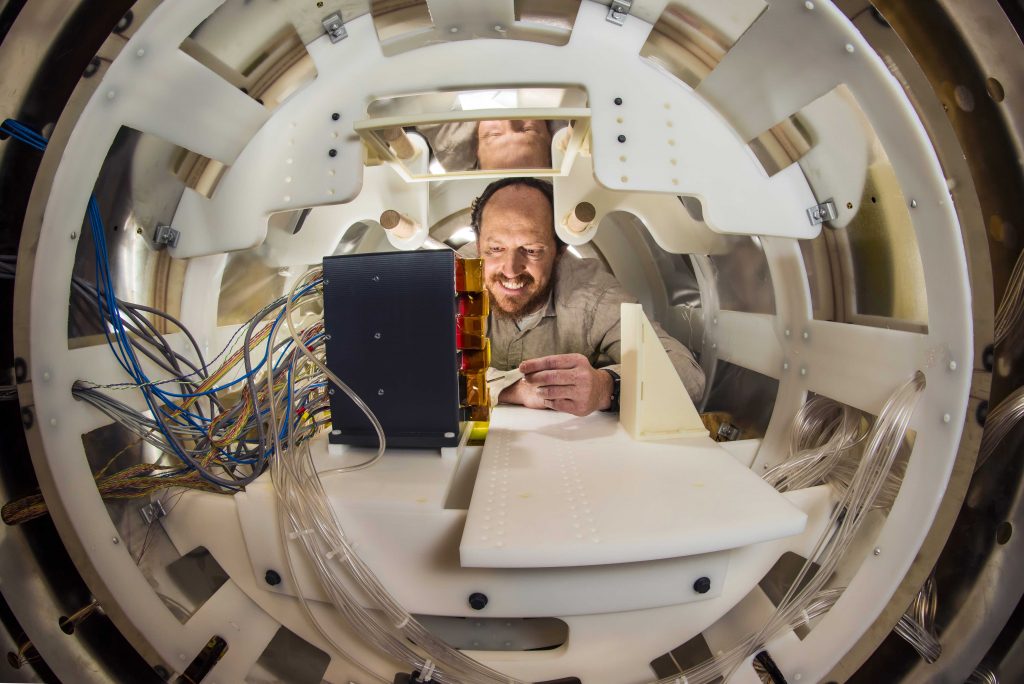Atomic Magnetometer
Highly sensitive, cryogen-free Atomic Magnetometer magnetic field sensor substantially reduces costs of acquiring and operating magnetoencephalography (MEG) systems

The Atomic Magnetometer MEG system uses a novel sensor design that allows it to be compact, highly sensitive, and versatile enough to be readily arrayed around the human skull. In the system, the pump and probe laser light are delivered via a single polarization-maintaining optical fiber, leaving the magnetometer with a single optical axis. The use of an optical fiber instead of beams propagating through free space allows the device to be oriented at any angle necessary for arraying the sensors properly around the head. The single optical axis allows the sensor to be long in one dimension but short in the other two dimensions so that the sensor has only a 4 cm by 4 cm footprint on the subject’s head. The device has four spatially separated magnetometer channels to measure the magnetic field gradients.
The Atomic Magnetometer has the potential to substantially reduce the cost of MEG, making MEG available to a much broader user community. In addition, the technology could provide the essential sensor technology that would enable the combination of MEG and low-field MRI in the same device. The technology is also ideally suited for use in the detection of cancer cells by using functionalized magnetic nanoparticles. Such detection techniques could reduce the duration of chemotherapy treatments and provide for earlier detection of cancer.
- Reduced cost
- Reduced duration of chemotherapy treatments
- Enables combination of MEG and low-field MRI in the same device
- Magnetoencephalography (MEG) systems
- Cancer detection with magnetic nanoparticles
- Low-field MRI
SD#11375
Published6/2/2014
Last Updated6/2/2014